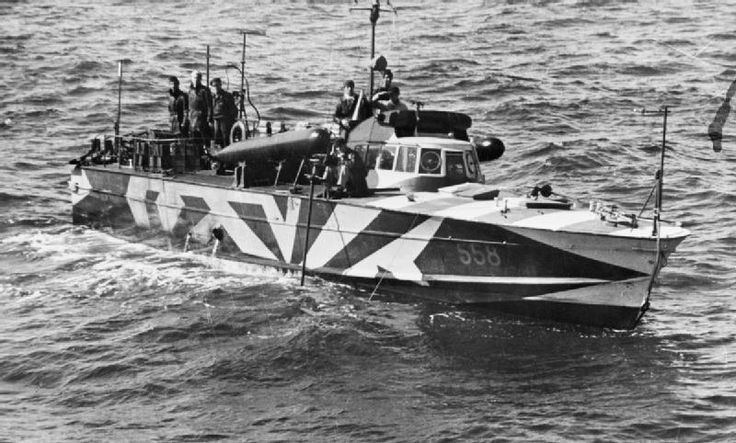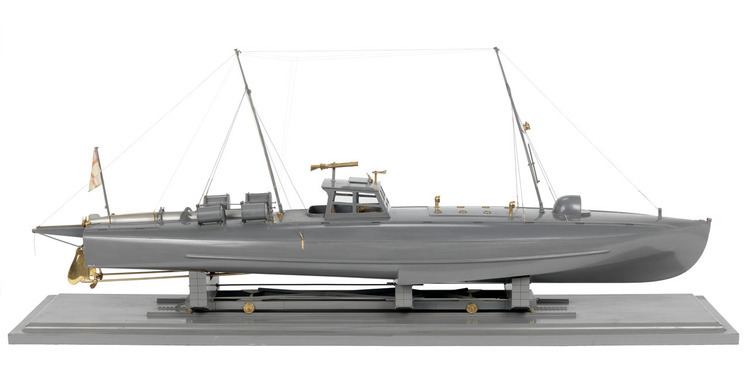Name 40 foot CMB Cancelled 16 | Preserved 1 (CMB 4) | |
 | ||
Builders Thornycroft, Tom Bunn, Taylor & Bates, J W Brooke, Frank Maynard, Salter Bros, Wills & Packham Completed 39 +2 not taken into service as CMB Builder John I. Thornycroft & Company | ||
Coastal motor boat m4v
During the First World War, following a suggestion from three junior officers of the Harwich destroyer force that small motor boats carrying a torpedo might be capable of travelling over the protective minefields and attacking ships of the Imperial German Navy at anchor in their bases, the Admiralty gave tentative approval to the idea and, in the summer of 1915, produced a Staff Requirement requesting designs for a Coastal Motor Boat for service in the North Sea.
Contents
- Coastal motor boat m4v
- Coastal motor boat meaning
- 40 foot Coastal Motor Boats
- Service history
- Survivors
- 55 foot Coastal Motor Boats
- 70 foot Coastal Motor Boat
- References

These boats were expected to have a high speed, making use of the lightweight and powerful petrol engines then available. The speed of the boat when fully loaded was to be at least 30 knots (56 km/h) and sufficient fuel was to be carried to give a considerable radius of action.

They were to be armed in a variety of ways, with torpedoes, depth charges or for laying mines. Secondary armament would have been provided by light machine guns, such as the Lewis gun. The weight of a fully loaded boat, complete with 18-inch (450 mm) torpedo, was to not exceed the weight of the 30-foot (9.1 m) long motor boat then carried in the davits of a light cruiser, i.e. 4.5 tons.
The CMBs were designed by Thornycroft, who had experience in small fast boats. Engines were not proper maritime internal combustion engines (as these were in short supply) but adapted aircraft engines from firms such as Sunbeam and Napier.

Coastal motor boat meaning
40-foot Coastal Motor Boats
In 1910, Thornycroft had designed and built a 25 ft (7.6 m) speedboat called Miranda IV. She was a single-step hydroplane powered by a 120 hp (89 kW) Thornycroft petrol engine and could reach 35 knots (65 km/h).
A 40 ft (12 m) boat based on Miranda IV was accepted by the Admiralty for trials. A number of these boats were built and had a distinguished service history, but in hindsight they were considered to be too small to be ideal, particularly in how their payload was limited to a single 18-inch torpedo.
Several companies were approached, but only Thornycroft considered it possible to meet such a requirement. In January 1916, twelve boats were ordered, all of which were completed by August 1916. Further boats were built, to a total of 39.
The restriction on weight meant the torpedo could not be fired from a torpedo tube, but instead was carried in a rear-facing trough. On firing it was pushed backwards by a cordite firing pistol and a long steel ram, entering the water tail-first. A trip-wire between the torpedo and the ram head would start the torpedo motors once pulled taut during release. The CMB would then turn hard over and get out of its path. There is no record of a CMB ever being hit by its own torpedo, but in one instance the firing pistol was triggered prematurely and the crew had a tense 20 minutes close to the enemy whilst reloading it.
Service history
In January 1919 a force of 12 CMBs was dispatched to the Caspian Sea (travelling by rail from Batumi on the Black Sea coast to Baku) to join a British naval unit supporting the anti-Bolshevik governments of Armenia, Azerbaijan and Georgia.
Survivors
The hull of CMB 4 in which Augustus Agar won his VC for the attack on Kronstadt naval base in 1919 and sank the cruiser Oleg was, for many years, at the Vosper Thornycroft works on Platt's Eyot on the Thames near Kingston. When these works closed it was restored and can now be seen at the Imperial War Museum, Duxford with details of these boats and the action. Agar’s VC is at the War Museum in London.
CMB 9 has been restored and is based at Avonmouth near Bristol. She took part in the 2014 Remembrance Day events in Bristol. CMB 9 was converted to a Distance Control Motorboat in 1918, the first CMB so converted and in so doing became DCB1. It is in her DCB outfit that the vessel currently exists.
55 foot Coastal Motor Boats
Larger versions of the 40-footer were ordered in 1916
In 1917 Thornycroft produced an enlarged 60-foot (18 m) overall version. This allowed a heavier payload, and now two torpedoes could be carried. A mixed warload of a single torpedo and four depth charges could also be carried, the depth charges released from individual cradles over the sides, rather than a stern ramp.
Speeds from 35–41 knots (40–47 mph; 65–76 km/h) were possible, depending on the various petrol engines fitted. At least two unexplained losses due to fires in port are thought to have been caused by a build-up of petrol vapour igniting.
It was these larger boats that entered the harbour during the Kronstadt raid and torpedoed the Soviet ships.
The design was so successful that more were built during World War II. The last survivor, MTB 331, is of this group, built in 1941.
Survivors
MTB 331, owned by Hampshire County Council and on-loan to the British Military Powerboat Trust (BMPT) at Marchwood, is the sole surviving 55' CMB. Built in 1941, the penultimate 55' built, her design was based on that of the CMBs of 1917 with two V12 engines. Her post-war history is incomplete, but she was registered as the Jonrey at Teignmouth, then later at Bristol. She was acquired by the Council, around 1990. Some restoration after this was carried out at Priddy's Hard, then she was transported by road to BMPT Marchwood in March 2000.
70-foot Coastal Motor Boat
Twelve 72 ft long CMBs were ordered in early 1918 for minelaying (7 magnetic mines) or torpedo work (6 torpedoes). Five were cancelled; of the remainder, 3 survived the Second World War, with CMB 103 MT preserved as a museum ship. CMB 103 was restored in August 2011 and is on display at The Historic Dockyard at Chatham.
